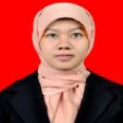International Journal of Education and Management Engineering (IJEME)
IJEME Vol. 14, No. 6, 8 Dec. 2024
Cover page and Table of Contents: PDF (size: 598KB)
Application of Particle Swarm Optimization to Improve the Performance of the K-Nearest Neighbor in Stunting Classification in South Sumatra, Indonesia
PDF (598KB), PP.32-43
Views: 0 Downloads: 0
Author(s)
Index Terms
Classify, KNN, Normal, Relief-F, Stunting
Abstract
This research aims to obtain the best accuracy in classifying stunting children's data using K-Nearst Neighbor (KNN) by combining Particle Swarm Optimization (PSO). The K-NN algorithm is an algorithm which is an unsupervised algorithm, and is proven to be good in data mining while Particle Swarm Optimization (PSO) show. Better optimization performance compared to other methods. The methodology in this research is data collection, data pre-processing, classification of stunted children, data sharing, searching for the optimal k value to the classification process and performance testing or Particle Swarm Optimization. This dataset has an abnormal data structure where certain attribute values have quite wide ranges.The results of the K-NN classification, the average accuracy of each fold, shows that the highest accuracy was obtained at a value of k = 10, namely 86.08% and the lowest was in the last experiment with a value of k = 7500 of 72.67%. It can be concluded that the higher the k value, the resulting accuracy will increase. Meanwhile, the results of K-NN classification with PSO can be concluded that the higher the w value, the greater the possibility of getting better fitness. This result is also in accordance with research where the best w value is above 0.5 and less than 1. This is because if the w value is more than 1 it can cause the particles in the PSO to become unstable because the resulting speed is not controlled. It is proven from the test results that the range This value produces better average accuracy and starts to decrease again when entering the value w = 1. Then the test results also show that a small value of w can result in the role of particle speed becoming insignificant and can increase the possibility of early convergence. It can be seen from the results of testing the number of PSO popsizes that the highest average accuracy was 93.2% at a value of w = 0.9. From the description above, KNN shows an accuracy of 86.08%, while KNN with PSO increases to 93.9%, so this shows that KNN with PSO is more accurate in classifying stunted children.
Cite This Paper
Ferry Putrawansyah, Chika Rahayu, Fameira Dhiniati, "Application of Particle Swarm Optimization to Improve the Performance of the K-Nearest Neighbor in Stunting Classification in South Sumatra, Indonesia", International Journal of Education and Management Engineering (IJEME), Vol.14, No.6, pp. 32-43, 2024. DOI:10.5815/ijeme.2024.06.03
Reference
[1]Katharina Oginawati, Sharnella Janet Yapfrine, Nurul Fahimah, Indah Rachmatiah Siti Salami, Septian Hadi Susetyo. "The associations of heavy metals exposure in water sources to the risk of stunting cases." Emerging Contaminants, 2023J. B. M. b. 1. V. L. P. b. K. K. Berny Carrera a 1, "Environmental sustainability: A machine learning approach for cost analysis in plastic recycling classification," Resources, Conservation and Recycling, Vols. Volume 197, October 2023, 107095, 2023
[2]J, Roihan A, Abas Sunarya P, Rafika As. Ijcit (Indonesian Journal On Computer And Information Technology) Utilization of Machine Learning in Various Fields: Review Paper. Vol. 5, Ijcit (Indonesian Journal On Computer And Information Technology). 2019.
[3]Dexu Zou a, Yongjian Xiang b, Tao Zhou b, Qingjun Peng a, Weiju Dai a, Zhihu Hong a, Yong Shi c, Shan Wang a, Jianhua Yin d, Hao Quan b. "Outlier detection and data filling based on KNN and LOF for power transformer operation data classification." Energy Reports Volume 9, Supplement 7 (2023): 698-711
[4]Ali Asgharzad Hamidi, Bill Robertson, Jacek Ilow. "A new approach for ECG artifact detection using fine-KNN classification and wavelet scattering features in vital health applications." Procedia Computer Science, 2023: Volume 224 , Pages 60-67.
[5]Sihombing Pr, Yuliati If. Application of Machine Learning Methods in Classifying the Risk of Low Birth Weight Events in Indonesia. Matrix: Journal of Management, Informatics Engineering and Computer Engineering. 2021 May 30;20(2):417–26.
[6]Ren Y, Wei W, Zhu P, Zhang X, Chen K, Liu Y. Characteristics, Classification And Knn-Based Evaluation Of Paleokarst Carbonate Reservoirs: A Case Study Of Feixianguan Formation In Northeastern Sichuan Basin, China. Energy Geoscience. 2023 Jul;100156.
[7]Soori M, Arezoo B, Dastres R. Machine Learning And Artificial Intelligence In Cnc Machine Tools, A Review. Sustainable Manufacturing And Service Economics. 2023 Jan;100009.
[8]Salim A, Juliandry, Raymond L, Moniaga J V. General pattern recognition using machine learning in the cloud. Procedia Comput Sci. 2023;216:565–70.
[9]Song X, Xie T, Fischer S. Accelerating Knn Search In High Dimensional Datasets On Fpga By Reducing External Memory Access. Future Generation Computer Systems. 2022 Dec 1;137:189–200.
[10]J. Maillo, I. Triguero, and F. Herrera, “A MapReduce-Based k-Nearest Neighbor Approach for Big Data Classification,” in 2015 IEEE Trustcom/BigDataSE/ISPA, 2015, pp. 167-172, doi: 10.1109/trustcom.2015.577.
[11]R. Karsi, M. Zaim, and J. El Alami, “Assessing naive bayes and support vector machine performance in sentiment classification on a big data platform,” IAES International Journal of Artificial Intelligence (IJ-AI), vol. 10, no. 4, pp. 990–996, 2021, doi: 10.11591/IJAI.V10.I4.PP990-996
[12]N. Seman and N. A. Razmi, “Machine learning-based technique for big data sentiments extraction,” IAES International Journal of Artificial Intelligence (IJ-AI), vol. 9, no. 3, pp. 473–479, 2020, doi: 10.11591/ijai.v9.i3.pp473-479
[13]K. B. Cohen and L. Hunter, “Natural language processing and systems biology,” Artificial Intelligence Methods and Tools for Systems Biology, Computational Biology, Dordrecht: Springer, 2004, vol. 5, pp. 145–173, doi: 10.1007/978-1-4020-5811-0_9.
[14]X. Wang, C. Yang, and R. Guan, “A comparative study for biomedical named entity recognition,” International Journal of Machine Learning and Cybernetics, vol. 9, pp. 373–382, 2018, doi: 10.1007/s13042-015-0426-6
[15]P. D. Soomro, S. Kumar, Banbhrani, A. A. Shaikh, and H. Raj, “Bio-NER: Biomedical Named Entity Recognition using Rule-Based and Statistical Learners,” International Journal of Advanced Computer Science and Applications (IJACSA), vol. 8, no. 12, 2017, doi: 10.14569/IJACSA.2017.081220.
[16]M. C. Cariello, A. Lenci, and R. Mitkov, “A Comparison between Named Entity Recognition Models in the Biomedical Domain,” Translation and Interpreting Technology Online, pp. 76–84, 2021, doi: 10.26615/978-954- 452-071-7_009
[17]Wisit L., Sakol U., “Image classification of malaria using hybrid algorithms: convolutional neural network and method to find appropriate K for K-Nearest neighbor,” Indonesian Journal of Electrical Engineering and Computer Science, vol. 16, no. 1, pp. 382-388, 2019
[18]] Saja T. A., Rafah S. H., Muayad S. C., “EDM Preprocessing and Hybrid Feature Selection for Improving Classification Accuracy,” Journal of Theoretical and Applied Information Technology, vol. 96, no 1, no. 1992-8645, 2019.
[19]Salal Y. K., Abdullaev S. M., Kumar M., “Educational Data Mining: Student Performance Prediction in Academic,” vol. 8, no. 4C, pp. 54-59, 2019
[20]J. Zhou, J. Li, C. Wang, H. Wu, C. Zhao, and Q. Wang, “A vegetable disease recognition model for complex background based on region proposal and progressive learning,” Computers and Electronics in Agriculture, vol. 184, 2021, doi: 10.1016/j.compag.2021.106101
[21]W. -P. Cao et al., “An ensemble fuzziness-based online sequential learning approach and its application,” International Conference on Knowledge Science, Engineering and Management, 2021, pp. 255–267, doi: 10.1007/978-3-030-82136-4_21.
[22]S. Atsawaraungsuk, T. Katanyukul, and P. Polpinit, “Identity activation structural tolerance online sequential circular extreme learning machine for highly dimensional data,” Engineering and Applied Science Research, vol. 46, no. 2, pp. 120–129, 2019, doi: 10.14456/easr.2019.15
[23]R. Venkatesan and M. J. Er, “A novel progressive learning technique for multi-class classification,” Neurocomputing, vol. 207, pp. 310–321, 2016, doi: 10.48550/arXiv.1609.00085.
[24]M. M. S. m. Mir Mikael Fatemi, "Classification of SSVEP signals using the combined FoCCA-KNN method and comparison with other machine learning methods," Biomedical Signal Processing and Control, Vols. Volume 85, August 2023, 104957, 2023.
[25]Yang Ren, Wei Wei, Peng Zhu, Xiuming Zhang, Keyong Chen, Yisheng Liu. "Characteristics, classification and KNN-based evaluation of paleokarst carbonate reservoirs: A case study of Feixianguan Formation in northeastern Sichuan Basin, China." Energy Geoscience, 2023: Volume 4, Issue 3, July 2023, 100156.
[26]Massami Denis Rukiko a, Adam Ben Swebe Mwakalobo b, Joel Johnson Mmasa. "The impact of Conditional Cash Transfer program on stunting in under five year's poor children." Public Health in Practice Volume 6, December 2023, 100437 (2023).
[27]Nimish Sharma, Shruti Shastri, Siddharth Shastri. "Does urbanization level and types of urban settlements matter for child stunting prevalence in India? Empirical evidence based on nighttime lights data." Cities Volume 140, September 2023, 104388 (2023).
[28]Zin Wai Htay a, Thinzar Swe b, Thae Su Su Hninn c, Maw Thoe Myar d, Kyi Mar Wai. "Factors associated with syndemic anemia and stunting among children in Myanmar: A cross-sectional study from a positive deviance approach." Archives de Pédiatrie Volume 30, Issue 6, August 2023 (2023).


